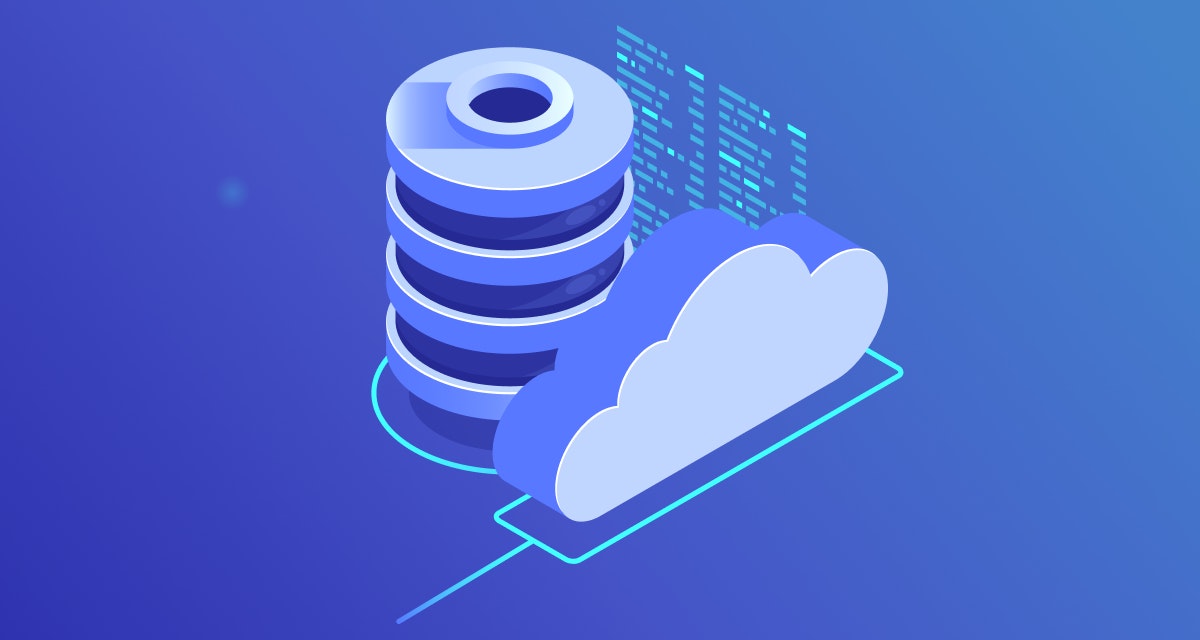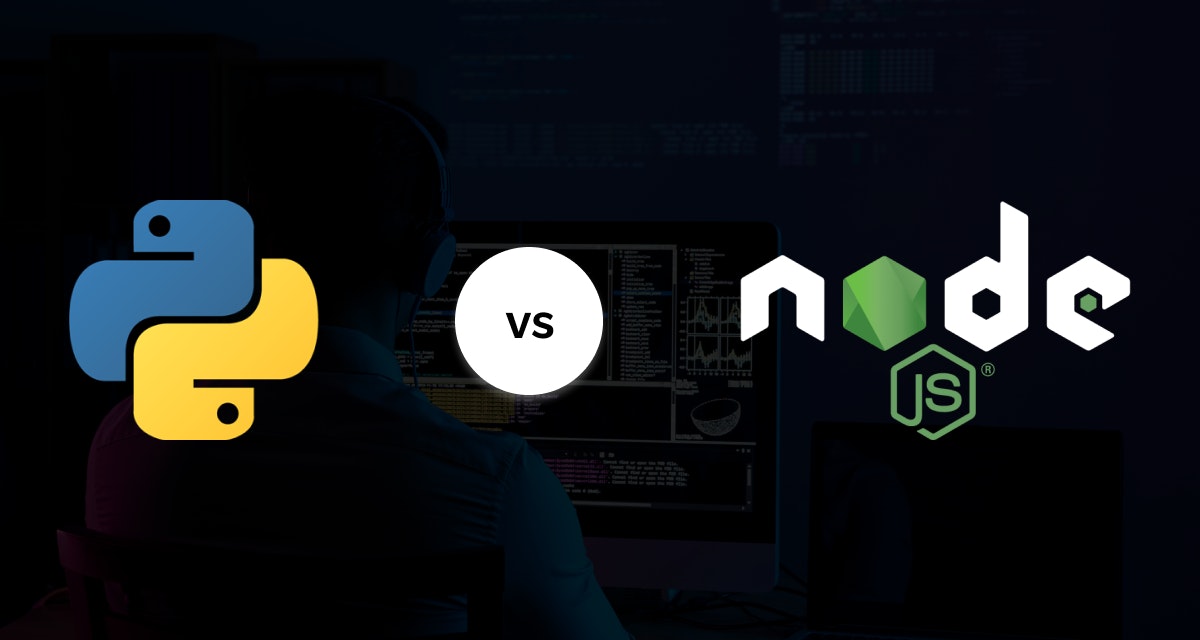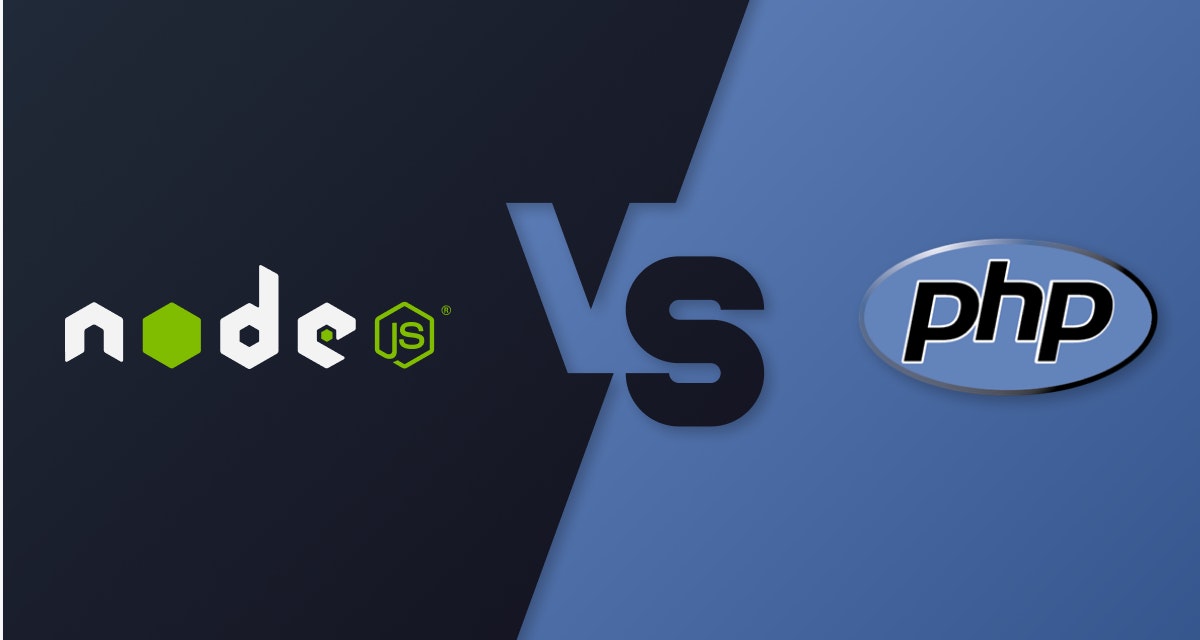Whether you are developing new software or upgrading its features, choosing the most popular database for apps can be an overwhelming process. After all, the database is supposed to handle millions of users, high volumes of data, and frequent updates.
Another reason why the database services are such an integral part of application development is that they allow developers to store, categorize, and organize data. However, of late, things have changed in the world of database management.
Traditional databases face a competitor that delivers what they just cannot - runtime scalability, cost-effectiveness, regular software updates, and more robust firewalls. That is right - we are talking about cloud-native databases.
Table of Contents
What is a cloud-native database?
It is precisely what it sounds like - a cloud-native database is a database service built, deployed, and delivered through cloud platforms. Its implementation involves installing database software on an infrastructure cloud.
This nativity to the cloud enables developers to build and manage applications to make the most elastic, distributed resources in cloud computing environments. It is typically delivered as a Platform-as-a-Service (PaaS) or Database-as-a-service (DBaaS).
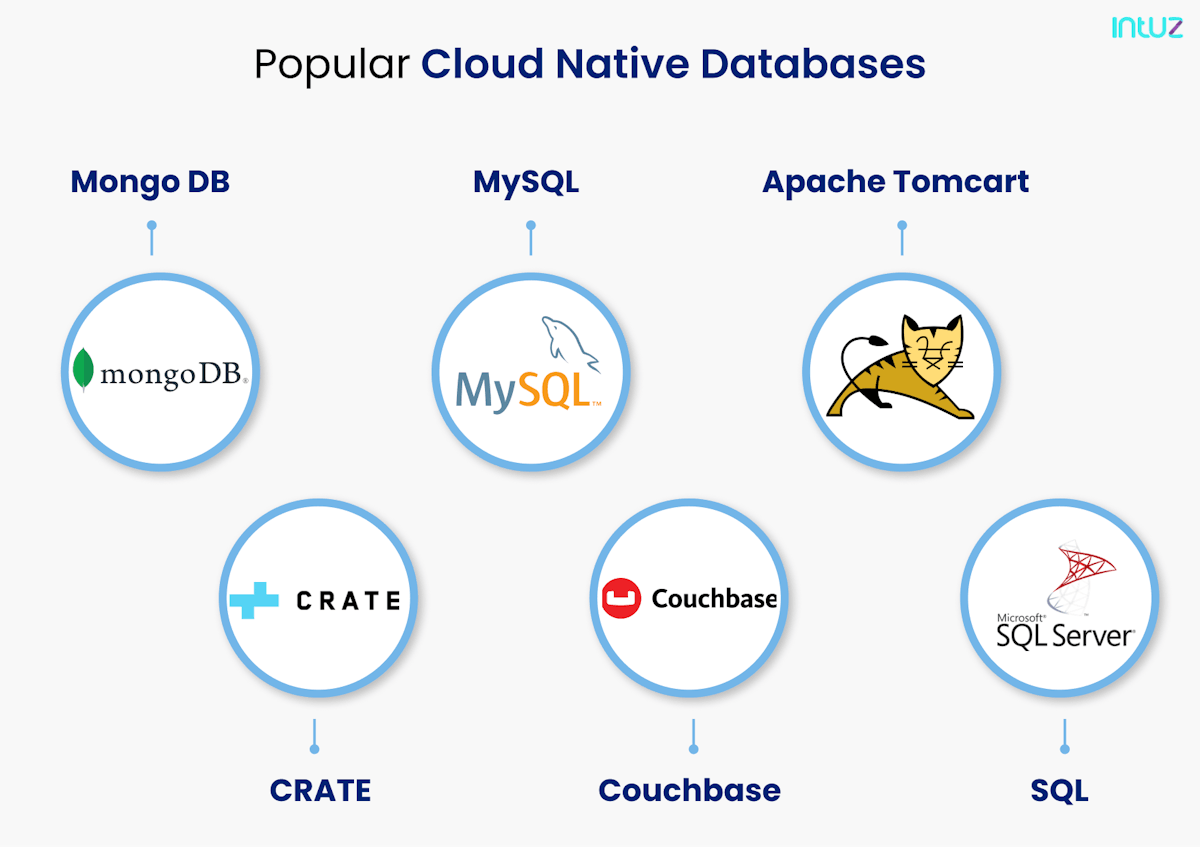
What is trending in the world database services?
1. Database services bridging SQL and NoSQL
SQL was first introduced in the 1970s by IBM researchers. In 1998, however, NoSQL entered the scene, which meant "databases without any SQL system." While the two concepts have their features, the latest trend in database services highlights those that don't support a single database structure and instead bridge SQL and NoSQL.
2. Big data providing value to businesses
Big data was first coined in the 1990s, but it was not before the 2010s that businesses could start analyzing the data in a competitive advantage. Database services have successfully matured into enabling businesses to structure any data - structured, unstructured, and semi-structured - and extract critical insights from data sets in an organized fashion.
3. Delivering agile data solutions
A Gartner study states that by 2022, data management manual tasks will reduce by 45% through ML-powered service-level management. That is brilliant since many companies are becoming more dynamic across functions and need adequate data support. Augmented data management allows databases to self-tune and self-amend with the help of AI and ML analyses.
4. Heightened focus on security
The rising number of cybercrimes highlights the need for data security. Network privileges and hardware/software misconfigurations can result and have resulted in data leak before. No wonder businesses cannot stress enough, the fact that firewalls and antivirus software are essential. That is why developers must work with their IT security peers to ensure the safety of enterprise data.
5. Enterprises leaning towards database services on the cloud
Developers have now moved their focus on merging cloud computing services with existing infrastructure and applications. Databases on the cloud enable them to run multiple pilot tests, boost the application's speed, and create a better offering overall. Cloud-native apps allow businesses to respond to competitive threats and ever-changing industry trends promptly.
Database services - the big names
Many notable cloud-native database programs offer cloud database services, including both SQL and NoSQL data models:
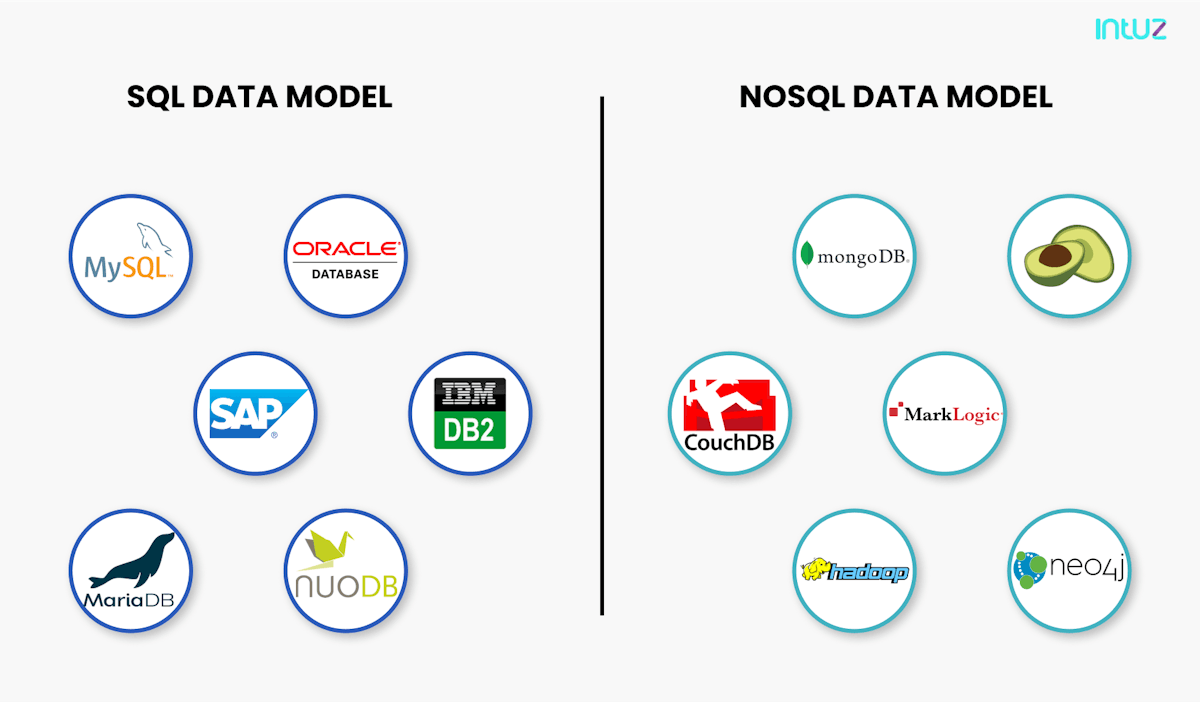
This article runs a comparative analysis of two popular cloud-native database platforms, i.e., MongoDB and MySQL. Are you ready to learn how the two concepts fare in the world of software development? Let us begin:
What is MongoDB?
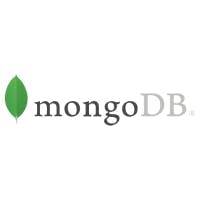
One of the most widely used cloud-native database services, MongoDB, was first rolled out in 2007, and its first version came out in 2010. It comprises a flexible document-oriented data model, which is ideal for businesses that deal with unstructured data.
MongoDB database employs document stores, wherein the data does not adhere to any fixed format but instead forms its structure. These document stores are built and stored in BSON files (also known as the modified versions of JSON files), facilitating the data exchange between servers and web apps in a human-readable format (encoded data).
It is because of the presence of JSON files that the MongoDB database is JavaScript-supported. The cloud-native database program also offers greater flexibility and reliability due to features such as auto-sharding, embedding, and onboard replication, enabling businesses to meet their storage and speed demands adequately.
Many successful companies across the globe use the MongoDB database. Some of them include:
- SurveyMonkey
- Citrix
- T-Mobile
- Zendesk
- InVision
- Foursquare
- Hootsuite
Use cases of MongoDB
There is a reason why the MongoDB database is favored by so many big brands in the world. It believes storing data in JSON-like documents is the most natural way to think about data, and they are not wrong! That format is much more expressive than the traditional row/column format, and that is one of the many things that developers like about MongoDB.
Let us take a look at three use cases:
1. Craigslist
Before the MongoDB database, Craigslist would post more than 1.5 million ads daily and store that data in a MySQL cluster. However, this setup lacked flexibility leading to skyrocketing management costs for Craigslist and the company desperately wanted to curb that.
On deploying MongoDB, Craigslist was able to:
- Reduce expensive scheme migrations
- Ensure auto-sharding
- Alleviate any operational pain-points
- Enable horizontal scalability
2. MTV Network
MTV Network was initially using a Java-based content management platform backed by a disproportionate data model. As the data volumes arose, the read performance of their database storage system faltered. To eliminate this problem, MTV moved to the MongoDB database to avoid worrying about adding more brands to the platform in the future.
3. Cisco
Cisco's eCommerce platform migrated to MongoDB to eliminate the following pain points:
- Poor page response time
- Zero downtime on new code deployments
- Fault tolerance
On the MongoDB database's deployment, the cloud-native database program enabled the company's eCommerce solution to drive business agility enabled by cloud computing and ensure high resilience without any interruptions and glitches.
They also experience 8X faster response times and deliver continuous availability to ensure their website visitors are served 24/7. The MongoDB database is definitely behind Cisco's successful eCommerce transformation.
The use cases mentioned above justify that no database other than MongoDB makes businesses more productive and agile. The next section discusses the pros and cons in detail:
Pros of MongoDB
- Each MongoDB database comprises collections which, in turn, employ document stores built and stored in BSON files.
- Each document consists of a varying number of fields, along with different content and size. That is how the data on MongoDB creates a structure of its own.
- Rows in the MongoDB database don't need to define a schema. That allows fields to be created on-the-go, which enables greater flexibility to the developers.
- MongoDB's document structure depends on how developers construct their objects and classes in programming languages.
- Representing hierarchical relations to store arrays and other complex structures is more straightforward on the MongoDB database.
Cons of MongoDB
- MongoDB does not have a provision for Stored Procedures or functions, which means it is impossible to deploy any business logic at the database level. This is not the case with any RDBMS systems.
- The cloud-native database program does not support ACID (Atomic, Consistency, Isolation, and Durability) transactions, unlike other RDBMS systems.
- Transactions happening on the MongoDB database are complicated.
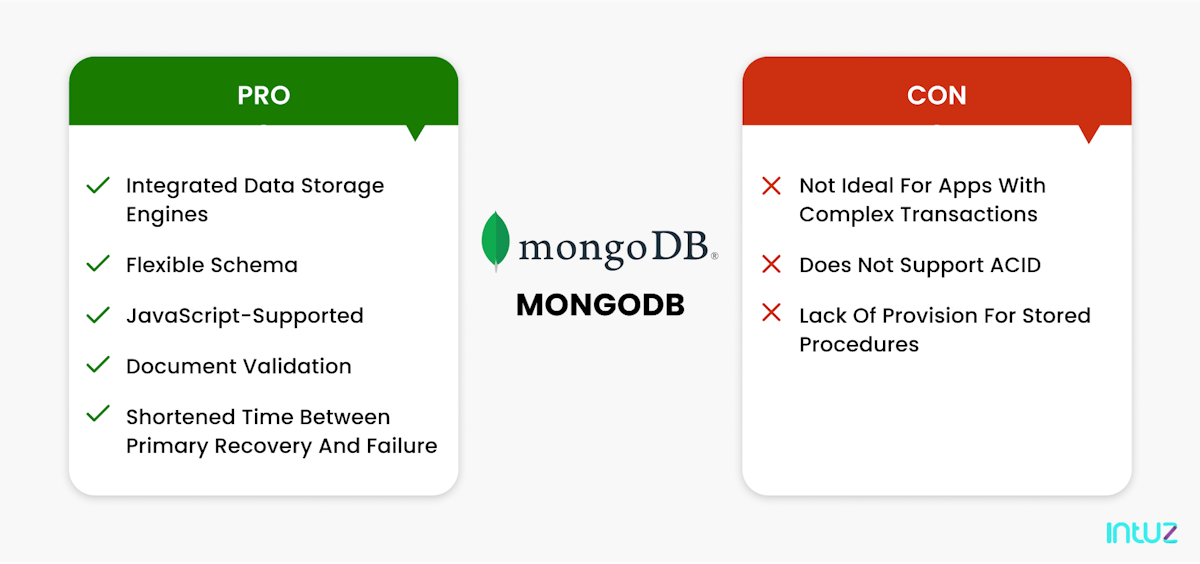
Now that we have looked at MongoDB closely, let us step into the world of SQL with the popular cloud-native database, MySQL:
What is MySQL?
MySQL is a DBMS system used widely in software development. It was initially built by MySQL AB, although Oracle Corporation presently owns it. SQL stands for Standard, Query, Language. The MySQL database has a simple concept - the data is stored in rows and tables, which can be further classified into the database.
The MySQL database deploys a structured query language SQL to enable developers to access and transfer the data, create backups, and use commands such as 'UPDATE,' 'DELETE,' 'SELECT,' and 'INSERT.' Related information gets stored in different tables.
The MySQL database is pretty fast, scalable, and reliable. This free and open-source code is available under the GNU General Public License.
Oh, and there is an interesting story behind its name. "My" is the name of the daughter of the person who co-founded the database service, Michael Widenius.
The MySQL database's learning curve is shallow compared to other cloud-native database services such as Microsoft SQL Server or Oracle Database. Developers with limited knowledge of cloud-native databases can master MySQL with training.
The MySQL database can run on various platforms such as Linux, UNIX, Windows, and so on, so forth. Some of the big brands that deploy MySQL include Pinterest, Walmart, YouTube, Walmart, Spotify, and PayPal.
Use cases of MySQL
Do you want to know why so many big names favour this cloud-native database? Let us look at two use cases of the MySQL database:
1. Wikipedia
Wikipedia averages over 18 billion unique page views in a month. This requires them to have a robust website and can rise to the increasing demand of internet users.
On deploying the MySQL database, Wikipedia managed to scale from a single shard server to the top ten websites on the internet. That is why it can accommodate more visitors to the website because of MySQL's scalability tendency.
Wikipedia can enable half a million edits and thousands of entries without crashing the servers. Thanks to MySQL, it can add new servers on an as-needed basis because of how well the website structure sustains itself.
2. BBC
Before BBC deployed the MySQL database, its primary concern was to enable a dynamic system that would give its audience a real sense of the news stories most read by the users on the website in real-time.
The challenge was to balance the demand for high performance - in a budget. By deploying the MySQL database, the BBC built an in-house system wherein the news site could monitor the number of stories being read by visitors throughout the day or in a specific timeframe, such as in an hour or by evening 5 pm.
One of the highlights is that the cloud-native database program merged the tables' function to speed up the website's performance significantly. This has been a boon for the BCC as it wants to deliver an optimal experience to their website visitors.
The use cases mentioned above showcase that it offers around-the-clock uptime, a boon for websites like the BBC and Wikipedia. It tops the transactional database services available in the market. The next section discusses the pros and cons of MySQL in detail:
Pros of MySQL
- MySQL is known for its secure and reliable database services, especially when it comes to supporting transactional processes for eCommerce companies. That is one of the reasons why it is a hot favorite with Drupal and Joomla.
- The MySQL database supports multi-version concurrency control.
- MySQL allows complete customization to eCommerce businesses that have unique database server requirements to fulfill.
- It is compatible with various platforms using all major programming languages and middleware.
- It is designed to meet the most demanding apps while ensuring full-text indexes, optimum speed, and unique memory caches for optimal performance.
- It offers built-in tools for space and query analyses and allows trigger-based and log-based replication SSL.
- It comes with a multi-layered design with independent modules.
- The average download and installation time is less than 30 minutes on MySQL, which means usability for developers from the start.
- By migrating the current database applications to the MySQL database, businesses can enjoy significant cost savings on new projects.
Cons of MySQL
- MySQL cannot implement or compensate for fundamental relational database design problems despite its clustering and replication features.
- The transactions related to the system catalog in MySQL are not ACID-compliant.
- If a server crashes, it can corrupt the entire system catalog on MySQL, which is a bummer!
- Unfortunately, Stored Procedures are not cacheable on the MySQL database.
- Instead of being community-driven, MySQL is Oracle-owned, which means Oracle does not provide a public roadmap or accept patches.
- Since the MySQL database has closed-source, proprietary modules, Oracle does not proactively release test cases for security patches or bugs, which causes a bit of frustration amongst the developers.
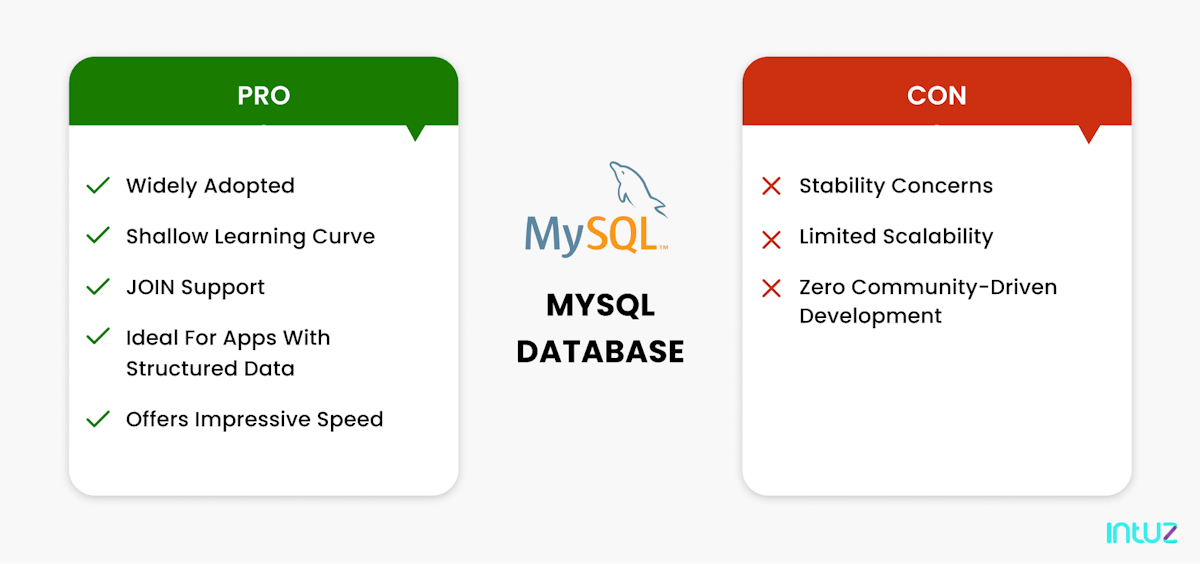
MongoDB vs. MySQL: where they stand apart
1. Integrity model - BASE/ACID
As mentioned previously, MongoDB does not support the ACID model, instead follows the BASE [Basic Availability, Soft-state, Eventual consistent] model.
That means if you are updating two values within a document, either both the values will be updated or they will remain unchanged. In other words, it supports atomic updates only on a single document level.
While the MongoDB database did not guarantee data consistency until now, its more recent updates have introduced causal consistency, enabling developers to fine-tune the application with more flexibility.
The MySQL database, on the other hand, follows the ACID model, which means once a transaction is complete, the data remains stable and consistent. That is why it does not allow documents to take any format.
That makes MySQL ideal for applications that can't bear a loss of data or inconsistency. However, this cloud-native database limits the horizontal scalability of the transactions.
2. Ease of deployment and community support
The deployment of the MongoDB database was written in C++ and C alongside JavaScript. It also contains binaries for systems such as Windows, Linux, OS X, and Solaris. On the other hand, MySQL is also written in C++ and C languages and contains binaries for not only Windows, Linux, and OS X but also AIX, FreeBSD, IRIX, NetBSD, HP-UX, and more.
When it comes to community support, MongoDB has an ever-growing one. However, since Oracle owns MySQL, there is zero community-driven development.
3. Flexibility of schema
MongoDB has no restrictions on the schema design whatsoever. That means you can define a table with some columns and add more columns without redefining the table structure. However, you will need to keep optimizing your scheme based on how the application accesses the data.
Alternatively, before storing anything in the MySQL database, you must clearly define the tables and columns and ensure every row in the table has the same column. Little modification is allowed in the data model, and hence, the deployment also slows down.
4. The querying languages used
Since MongoDB is a NoSQL database, it does not use SQL as its querying language. Instead, it relies on object querying wherein the formats or documents are passed during runtime to the query database. That means the risk of attack gets reduced as there is no SQL language used to identify and parse the data being passed across.
The MongoDB database relies on several drivers to enable its engine to converse with several programming languages such as Java, Perl, Python, PHP, Ruby, and Scala. MySQL, on the other hand, follows standard SQL like other RDBMS systems. It can be vulnerable to SQL attacks as the values are directly passed to the database instead of documents or objects.
5. The facilitation of full-text search
MongoDB did not support full-text search until recently. Now, it executes using a specific index type on various strings. Moreover, it also supports the "phrase" and "terms" search. Boolean search, a popular search functionality on LinkedIn, is supported by this combination of phrase and terms search.
However, MongoDB also comes with its own set of limitations, starting with its inability to facilitate any control over the specifying fields of subsets for performing a full-text search. MySQL, on the other hand, supports full-text search through:
- Natural language search (phrase search)
- Boolean search (terms search)
- Query search
The full-text search functionality has matured in the MySQL database unlike MongoDB, where this is a fairly recent addition to their offerings.
6. Consistency due to CAP theorem
Under the CAP theorem, the MongoDB database ensures a consistent view of the database will be available for all clients to see. However, despite this functionality, the users of one node will have to wait for other nodes to agree before any reading or writing changes are made to the database. In such a scenario, consistency takes precedence over availability.
Under the CAP theorem, the MySQL database ensures the data is consistent between all nodes as long as the nodes are online. This will also allow developers to read or write from any node, keeping in mind the data's consistency.
The only thing is if ever a partition develops between a node, the data will get out of sync, and it won't resolve until the partition is shut.
7. Sharding methods in the databases
Sharding means distributing the data across different machines to support deployments with high throughput levels and large data sets. More massive datasets and high query rates can put a dent in the I/O capacity of the server's CPU and disk drives.
However, this problem can be quickly resolved with vertical (adding more RAM power) and horizontal scaling (dividing the dataset and workload amongst additional servers). MongoDB's sharding can break up the collection into data subsets to store them across multiple shards.
The functionality in the MongoDB database allows the app to grow beyond the resource limits of a replica set or even a standalone server. The MySQL database, alternatively, does not have a standard sharding implementation, and it offers only two ways of sharding:
- MySQL Fabric - built-in automatic sharding (although rarely deployed)
- MySQL Cluster - official sharding framework
8. Replication in the cloud-native databases
MongoDB supports built-in interaction, sharding, and auto-elections. Using the latter, developers set up a secondary database that takes over when the primary database fails. Sharding in MongoDB enables horizontal scaling, which is challenging for developers to implement with MySQL.
On the other hand, the MySQL database supports the master-slave and master-master replications, which enable the developers to replicate from multiple masters parallelly.
9. The game of speed and performance
MongoDB takes pride in ensuring better controlled large volumes of available data. It stores the entity data on one document and allows the users to read and write data in one place instead of multiple places. All of this makes the applications faster.
This is not the case with MySQL, and the cloud-native database struggles to control high volumes of unstructured data. Unlike MongoDB, it stores the data across various tables instead of just one place. Without that, reading and writing data in the database are not possible.
10. Robust security models
MongoDB delivers robust security features such as authentication, authorization, and auditing, making it viable for users to use Transport Layer Security [TLS] and Secure Sockets Layer [SSL] for encryption purposes. Moreover, it ensures the documents can only be accessed and read by the intended clients.
MySQL is known for its robust security privileges, which means developers can access and transfer the data, create backups, and use commands such as 'UPDATE,' 'DELETE,' 'SELECT,' and 'INSERT' without any hassle.
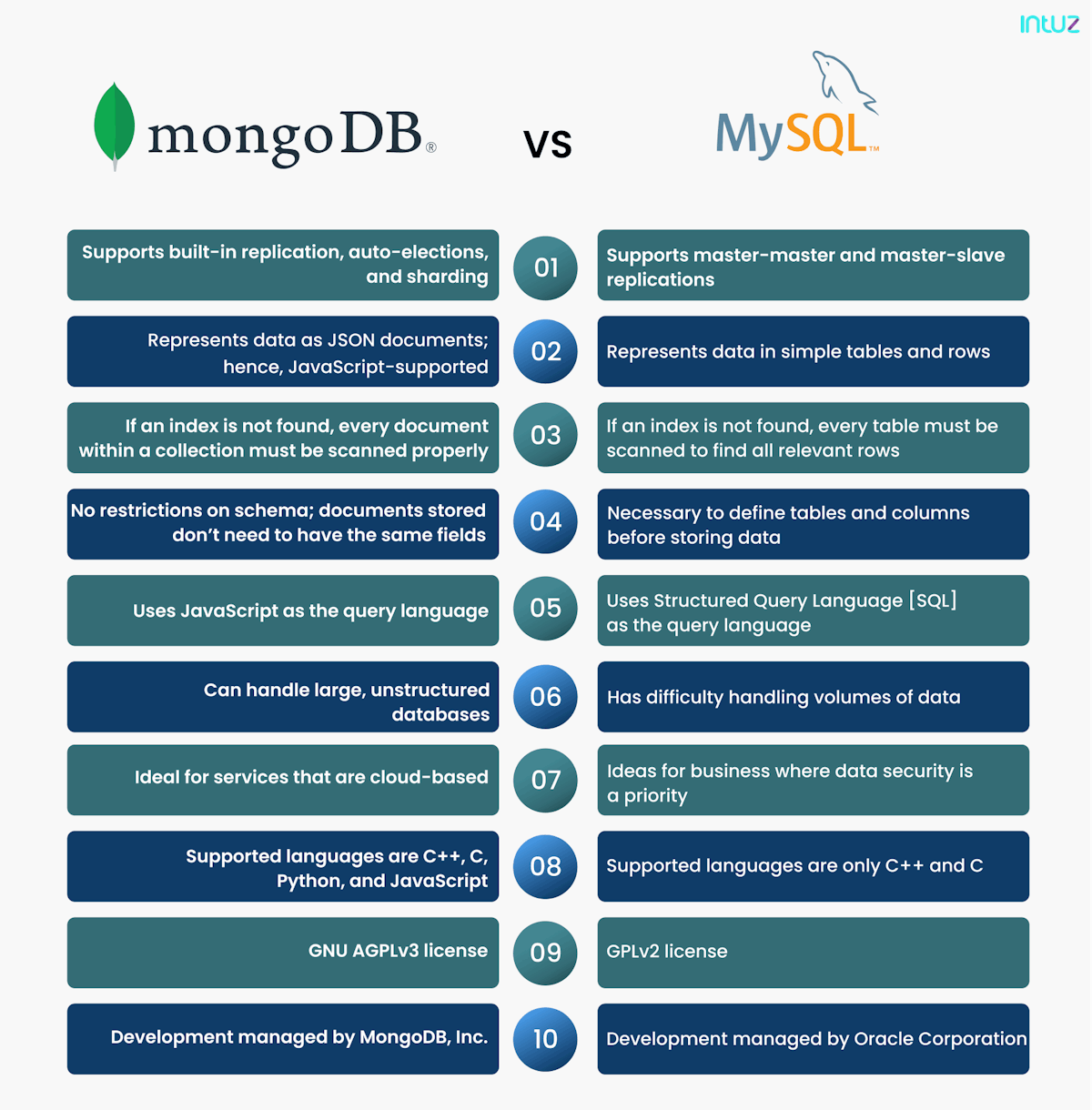
MongoDB vs MySQL: which one is better?
Now that we have learned what both the cloud-native databases are and how they function and add value to businesses, it is difficult to answer this question because there is no right answer.
The reason being, it depends on your business vision, project goals, and the type of customer experience you want to deliver with your application. You will agree with that!
The MongoDB database allows companies to build applications promptly. The cloud-native services is suitable for dealing with various data types as it will enable the data sets to form their structure rather than follow one specific format.
MongoDB is also highly scalable across multiple distributed data centres - without any downtime. On the other hand, the MySQL database is known for its high performance, robust data protection services, and easy data management.
But if you have any of the following conditions, then you must go for MySQL to ensure your application’s high performance:
- Are starting a business where the database won't scale much for an extended period
- Have a database structure that is not going to change anytime soon
- Have a fixed schema
- Need optimal data security
- Have a limited budget
The MySQL database services allow proper data indexing, which further enhances the application's performance and ensures robustness. However, if your data is not structured and can be complicated to handle, you should opt for the MongoDB database services.
Summing it up
Despite the pros and cons of both MongoDB and MySQL, it is safe to conclude there is no clear winner in the MongoDB vs. MySQL race. The two database services serve different niches and different requirements, making them ideal in different scenarios. So, it depends on what your business wants to achieve. That is all!
However, if you want to clarify that business vision and need expert support to identify the right cloud-native database for yourself, talk to us. Our cloud database service developers will provide you with proper guidance on your requirements. Contact us today!
